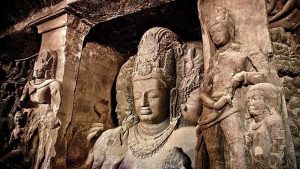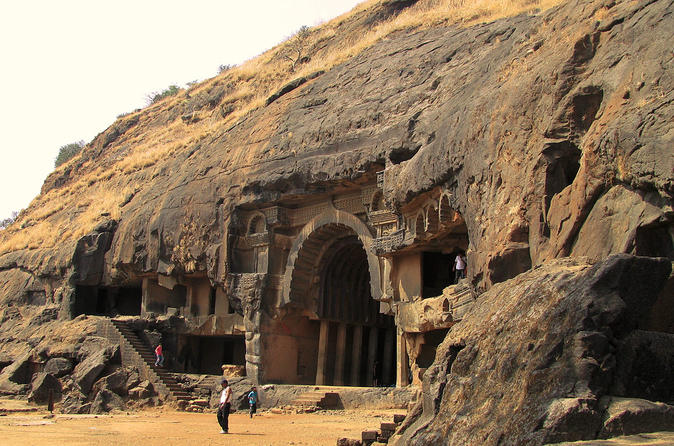Elephanta lsland was known in ancient times as “Gharapuri” or The Place of Caves. The Portuguese took possession of the island and named it Elephanta after the great statue which they found on the seashore.
There are seven caves of which the most important is the Mahesha-Murti Cave. The main body of the cave, excluding the porticoes on the three open sides and the back aisle, is 27 m square and is supported by rows of six columns. The gigantic figures of Dwarapalas, or doorkeepers are very impressive.
The cave temple, which is the pride of Elephanta, sprawled over an area of approximately 5000 square metres, is ancient architecture. What is almost tangible is their intense faith, which seems to create an energy field in the cave premises. Each of the panel captures the volatility of Shiva’s essentially paradoxic nature, and the magical interplay of light and shade, only intensities the overall effect reached by climbing stairs.
lnside the temple, is a large pillared hall with rows of columns that appear to hold up the roof of the cave.
Cross beams complete the illusion of a ceiling. One’s attention is immediately drawn to the series of marvelous sculptured panels, nine in all, which are set like tableaux on the walls. Little is known about the architects and sculptors, who worked on this gem of ancient architecture. What is almost tangible is their intense faith, which seems to create an energy field in the cave premises. Each of the panel captures the volatility of Shiva’s essentially paradoxic nature, and the magical interplay of light and shade, only intensifies the overall effect.

Attractions of Elephanta Caves :
Trimurti -The main attraction is the three headed idol Brahma, Vishnu and Mahesha.
Mahesa murti cave -lt is a 27 m square cave supported by row of six columns each. The figures of Dwarapala or doorkeepers here are impressive.
Construction of The Caves :
The rock cut temples in Elephanta caves are carved out of rock. There are columns internal spaces and images within these temples. The entire temple is related to a large sculpture. In fact one can walk through the corridors and chambers of this sculptured temple. Created through a process of rock removal, the complex is an interesting monument. Some of the rock surfaces here are finely finished whereas some are unfinished bare rock.
The Elephanta rock caves are sprawled over a large area of about 60000[square feet. These temple caves consist of a main chamber, courtyard and several subsidiary shrines. There is also a mass of natural rock, above the temple. There are three entrances to the temple. The eastern and the western entrances mark the axis of the temple. There is a 20 pillared hall that lines the axis, and on its western end is a cell in which a Shivalingam enshrined.

Access : Ferry available every hour from Gateway Of India. (Ferry operates subject to weather conditions and government restrictions)
Timings : 0900 hrs to 1430 hrs (Return after 4 hours) Mini – train on jetty.
It is open an all days except Mondays.

